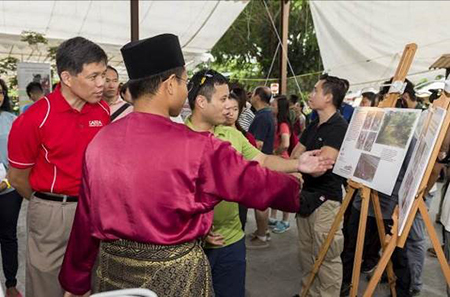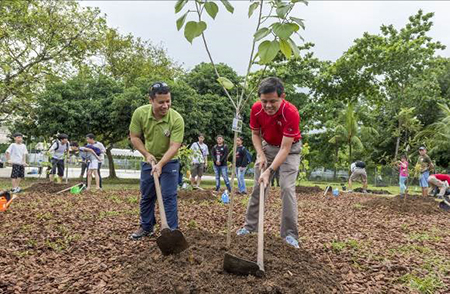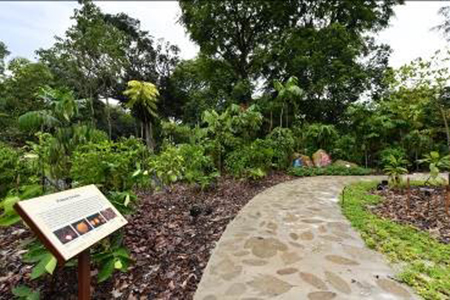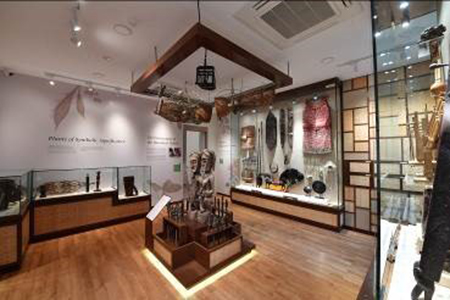Pulau Ubin and the Singapore Botanic Gardens have long occupied special places in Singaporean hearts and history. This June, more people had the opportunity to discover and experience important cultural aspects of these sites through Ubin Day and the Singapore Botanic Gardens Heritage Festival.
Celebrating Pulau Ubin’s various facets
First held in 2002, Ubin Day celebrates different facets of the island. Ubin Day is part of Pesta Ubin, a month-long festival organised by the Friends of Ubin Network (FUN) and the community. More than 3,500 participants took part in over 50 activities on the island during Pesta Ubin.
Held on 24 June this year, the seventh edition of Ubin Day saw a myriad of activities organised by the community in collaboration with the National Parks Board (NParks), including kampong games, art workshops, visits to kampong houses, and a talk about an archaeological dig on Pulau Ubin. Community groups set up educational booths to promote biodiversity conservation, cultural heritage, and various ground-up initiatives. The Photographic Society of Singapore and NParks also collaborated on a photography exhibition titled “The Island in Focus”, which captured unique aspects of Pulau Ubin.

Apart from the festivities, guest-of-honour Mr Chan Chun Sing, Minister for Trade and Industry, and Mr Desmond Lee, Minister for Social and Family Development and Second Minister for National Development, unveiled improved facilities at the Ubin Living Lab. The Ubin Living Lab is an integrated facility for field studies, environmental education, and community outreach.
NParks has created a new working space at the Ubin Living Lab where the community can do restoration work onsite. Other enhancements that have been added include toilets and showers, to make it more conducive for students and researchers to stay over at Ubin for research and educational activities. Minister Chan and Minister Lee also joined the community in planting over 100 coastal trees at the Ubin Living Lab.

Missed Ubin Day and curious about what Pulau Ubin has to offer? Check out www.nparks.gov.sg/pulau-ubin to learn more about the island and to sign up for activities organised by NParks on the island.
Exploring Southeast Asian heritage at the Singapore Botanic Gardens
The annual Singapore Botanic Gardens Heritage Festival took place from 30 June to 8 July this year. On top of celebrating the Gardens’ rich heritage, the Festival featured some of the plants used by the indigenous cultures of Southeast Asia, including those in Singapore. Over two weekends, visitors enjoyed a wide range of fun-filled activities and programmes, including a carnival with stalls selling plants, games and food, free concerts and movie screenings at the Shaw Foundation Symphony Stage, and educational tours around the Gardens.
The Festival kicked off with the opening of the new Ethnobotany Garden on 30 June. This approximately one-hectare themed garden is the first of its kind in Singapore, where visitors can learn more about the plants used by the indigenous cultures of Southeast Asia.
The Ethnobotany Garden is in the Gardens’ Bukit Timah Core, and is located at an area historically known as the Economic Garden. Featuring plants native to Southeast Asia that have traditional uses, this is the largest such collection in Southeast Asia. Various artefacts that reflect different aspects of indigenous living are also displayed throughout the garden.

The garden includes a two-storey Centre for Ethnobotany which houses an interpretive exhibition of artefacts, interactive displays, and informational panels that further highlight the roles plants have played in shaping the world we know today.

With the Ethnobotany Garden, the public can better understand the Gardens’ important historical role in introducing and promoting many plants of economic value to the region, and learn more about how early settlers made use of plants in their local cultures and daily lives.
If you are keen to learn more about these plants our predecessors used, come on down! The Ethnobotany Garden is open from 5am to 12 midnight daily, while the Centre for Ethnobotany is open from 9am to 6pm daily except for the last Wednesday of the month.







